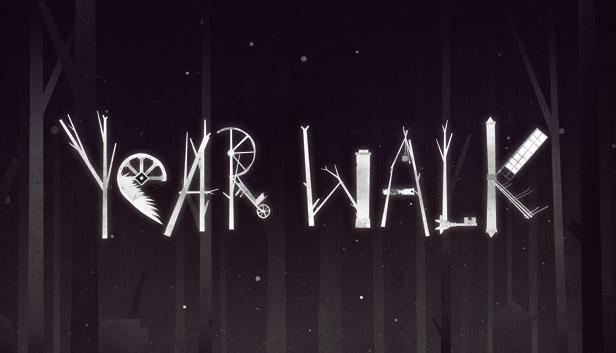Critical Play: Year Walk
For this week’s Critical Play, I played Year Walk on an iPad. This game was created by Simongo, and is available on macOS, iOS, and Windows.
This game is targeted at people who are interested in solving puzzles, exploration and mystery/thriller. It is available on mobile devices and is relatively short and easy to play, therefore it can be played by casual/inexperienced gamers.
Age range: 12+
Formal Elements
Players: this is a Single Player game. This allows the player to explore the narrative by observing and interacting with the environment through the main character’s point of view.
Objectives: the goal of the game is to uncover what the future holds by solving a series of puzzles and finding clues that unlock different stages of the game. These obstacles appear as the player makes their way through the forrest, overcoming them to arrive at the final destination: a church where the player is able to see into the future.
Rules and Procedures: the player can explore their environment by swiping left and right, panning the main character’s field of vision. Using white arrows on the screen, they can move forwards and backwards to move through the different locations. By interacting with certain elements in the environment, the player can find clues and puzzles that allow them to progress through the game.
Resources: the player relies on their ability to pay attention to detail, interpret clues and solve puzzles. Winning this game depends on using the sensory information available through sounds and visual stimuli in the environment and the physical interaction with objects and puzzles.
Boundaries: the player is limited to move through a bounded area, advancing through the map, and unlocking certain locations as they solve the game’s puzzles. The player can move forwards, backwards, lefthand right, but their vision of the environment is limited to the character’s field of vision, where the character cannot turn around, so the player can only see forwards and rotate about 180 degrees. This helps limit the space of exploration.
Outcomes: in this game, there are only possible outcomes: to win by solving all of the puzzles and reaching the final destination, or to give up in the process.
Types of Fun
The main aesthetics of fun in this game are challenge, discovery, and narrative.
Challenge: the game is particularly successful in challenging the player, as the obstacles that the player must go through to reach the final destination are very varied, combining sound clues, memorization, different ways of interacting with the device (swiping, tapping, using different numbers of fingers to achieve different outcomes) and creative ways of connecting the different clues and patterns.
Discovery: players must explore the world and discover the different locations on the map in order to reach their final destination. There is a lot of freedom in the way the player can explore their environment as they control where they want their character to walk, and there is no particular map or order of places to visit. This makes each experience go gameplay unique to different players and adds to the sense of mystery that characterizes the game.
Narrative: a narrative ties the puzzles and clues together, giving the character a reason to go on this “year walk” to reach the church and see the future. However, it is not clear why it is so important that the character reaches this goal, which makes it harder for the player to empathize with the character they are playing and really want them to succeed. In addition, a large portion of the symbols present in the game and the game setting have an important cultural and historical significance, that you don’t learn about unless you download a second companion app.
I think the game would be improved by incorporating the historical and cultural context of the symbols and setting into the story, and tying together the different pieces of the story in a more clear and organized manner. Relying on an external app to deliver this information means that a large proportion of players won’t be able to understand the narrative present. In addition, having extra clues or guides for when a player is stuck would also improve the game experience, as it is very frustrating to have to give up if you spend too much time walking around and are not able to move on to the next stage of the game.



